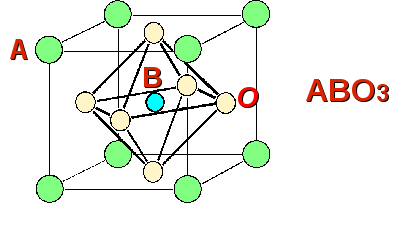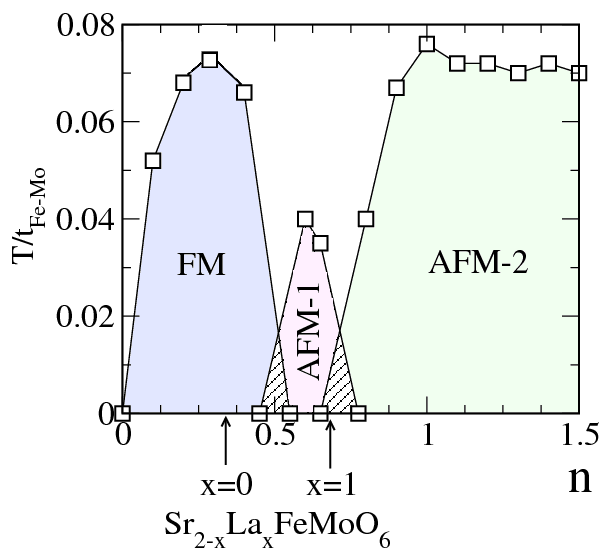Trivedi Group
Site Navigation
Complex Oxides
[In collaboration with M. Randeria]
Thrust group under Center of Emergent Materials.
Complex Oxides are a class of materials, many of which exhibit strong relationships between the charge, magnetic, and lattice degrees of freedom. From this, there can arise diverse and useful phenomena like multiferroicity, colossal magnetoresistance, and half-metallicity, among others. Within our group we are interested in modeling bulk and interface properties of ordered single and double perovskite materials in close contact with experiment. Topics being addressed include:
Modeling Bulk Double Perovskites:

The double perovskites hold a lot of promise for spintronics applications due to their half metallic state at room temperatures, in contrast to the manganites where typical Tc are around 200K or lower.
Theoretically, these are ideal systems to understand metallic ferromagnetism in a system with strong interaction between localized moments and itinerant electrons.
(1) We have generalized the double exchange mechanism to the double perovskite structure. (O. Erten)
(2) By exactly diagonalizing the electronic Hamiltonian in a background of classical spins, we have mapped out the phase diagram as a function of temperature and electron concentration. (O. N. Meetei)

As we increase filling, the system evolves from FM to AFM1 and then to AFM2. Beyond n=1.5, the phase diagram is a mirror image of itself due to electron-hole symmetry. We also see the change in Tc with filling and the ferromagnetic Tc is maximum around SFMO filling.
Complex Oxide Interfaces:
Recent experiments (Bhattacharya group, Nature Materials 8, 892 - 897 (2009) ) show a dramatic enhancement of antiferromagnetic order in layer-ordered "superlattices" of LaMnO3 and SrMnO3 compared with doped La1-xSrxMnO3. To understand how ordered layering affects physical properties in this system, we use a model Hamiltonian that describes the double exchange hopping of fermions and the effect of Jahn-Teller type phonons on a lattice of semi-classical "core spins”. We use Monte Carlo and exact diagonalization techniques to calculate the thermodynamic and transport properties of the bulk and interface materials. (W. Cole, A. Mukherjee)